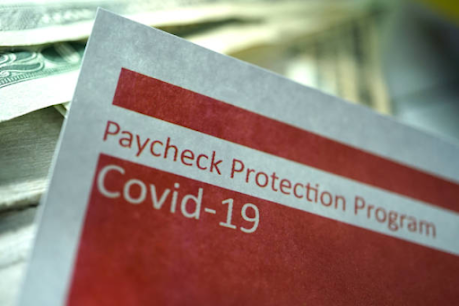Don't Overlook ERC: 5 Convincing Reasons Why it's Worth Your Attention for Payroll Tax Relief
Employers who suffered a large drop in revenue or were forced to drastically scale back or cease operations as a result of government COVID-19 orders may be eligible for the Employee Retention Credit (ERC), a Payroll Tax Relief. If you're planning on taking out a PPP loan in 2023 instead of applying for ERC, or if you haven't taken advantage of any federal COVID-19 relief programmes, you may be passing on "free money."
Consistent operation and growth of the ERC beyond 2021 merits careful thought. If you put in the time to investigate and organize, your organization could be eligible to receive hundreds of thousands of dollars in payroll support. (For instance, if you have 10 workers and can take advantage of the maximum credit on ERC-qualified earnings earned in 2020 and the first half of 2021, you might be able to get a payroll tax refund of $190,000.)
Program Updates That Can Help You Save Money
Employees can receive payroll tax credits of up to $33,000 each year.
Check ERC Eligibility and file for it if you have incurred a considerable drop in revenue or a suspension of activities as a result of government orders.
Submit an ERC application even if you've already taken out a PPP Loan or an EIDL Advance. Claim an advance if your company has 500 workers or fewer. ERC
Count employer healthcare contributions for furloughed workers as part of ERC-qualifying salaries.
Up to $33,000 in payroll tax credits per worker may be available to you.
The CARES Act limits the ERC credit, which can be claimed retroactively, to no more than $5,000 per employee for all eligible salaries paid during the 2020 period. According to the revised 2021 ERC, the maximum credit for qualified wages provided to an employee in an eligible quarter rises to $7,000. Together, that adds up to a possible Payroll Tax Relief of $33,000 per worker!
If government orders caused a whole or partial shutdown of your business, or if your revenue dropped significantly, you may be entitled to ERC.
You can claim ERC for salaries earned during periods when your business was constrained by government COVID-19 regulations or when your organization's gross receipts were lower than in previous quarters.
It's important to note that the ERC gross receipts reduction calculation changes between 2020 and 2021.
The ERC experienced a 50 percent drop in gross receipts in 2020 compared to the same quarter in 2019 or 2021, and a 20 percent decline in ERC gross receipts from Q4 2019 to Q4 2020.
20 percent decline in ERC gross receipts from Q1 2021 to Q2 2021 to Q4 2020. If your company did not exist in 2019, you can extrapolate negative quarterly gross receipts for 2020 from the corresponding quarter of the 2020 fiscal year.
A Word of Caution: Certain ERC eligibility conditions have changed due to the American Rescue Plan (APR) law passed on March 11, 2021. New IRS instructions clarifying the alterations are still needed. Have patience!
We can help you if you want to Check ERC Eligibility or visit the IRS official website to learn more!
The IRS provides answers to frequently asked questions (FAQs) on ERC on their website, which is worth a look if you're trying to figure out whether or not a certain quarter is eligible for ERC in light of the fact that ERC rules are always evolving (and updated, formal guidance is missing). The IRS is still revising its Frequently Asked Questions (FAQs) to reflect changes to the 2021 ERC.
Even if you have already taken out a PPP Loan or an EIDL Advance, you are now eligible to apply for ERC retroactively.
This groundbreaking adjustment to ERC in 2021 means that workers who took out a PPP loan or an EIDL advance in 2019 can still qualify for ERC on their qualifying salaries earned in 2020. If you have PPP and EIDL, you are eligible for ERC in 2021. That's good news for small businesses because it means they'll have less of a burden when processing payroll (ERC is a great Payroll Tax Relief).
Most businesses qualify for ERC and can therefore have their PPP debt forgiveness requirements met, especially if they have had to temporarily shut down or scale back operations because of government public health orders. Employers who receive benefits from two or more programs for the same wages (such as credits for FFCRA paid leave and wages paid with PPP funds that were forgiven) may need to maintain meticulous records to disprove allegations of double-dipping. Since the criteria of qualified salaries for ERC under the IRS and the definition of eligible payroll costs under the PPP Forgiveness Application are so drastically different, this could become a thorny issue.
PPP Eligibility vs ERC Eligibility
Without counting the fact that "wages" have multiple meanings depending on the context, you must also consider the temporal frames at play. You can choose the quarters in which you first became eligible for the payroll credit due to a shutdown or a fall in gross receipts, and apply those quarters to the ERC. This is because the PPP covered period is flexible (24 weeks from when you received PPP money).
You must also carefully account for the fact that you used different wages for the ERC and PPP Forgiveness Applications. You must provide evidence to show that the wages used for ERC are not the same as the wages used on your PPP Forgiveness Application.
It's not easy to assess everything with PPP and ERC, but doing so could be quite beneficial to your company in the long run.
Please hold off on submitting your PPP loan forgiveness application if you still haven't done so.
The salaries paid using PPP money do not count towards ERC eligibility, so claiming the bare minimum for payroll expenditures (60 percent of PPP funds) will free up additional income for ERC.
In a hurry and need some cash? It is possible to get an advance on advance ERC by withholding qualified payroll taxes if your company has 500 or fewer workers.
There are very few exceptions to the need that an employer withhold payroll taxes, but this is one of them. The Internal Revenue Service states that qualified businesses may lower federal employment tax contributions in preparation for ERC. To make up for the shortfall in deposits, they might apply for a cash advance from the ERC.
This is obviously not a green light to stop contributing to payroll taxes. To be eligible for credits for ERC-qualified wages, you must document, disclose, and prove that you have earned them. Also, make sure that you do not leave off earnings that your employer has already credited to you, such as paid leave under the Family and Medical Leave Act (FMLA) or payroll costs included with PPP loan forgiveness, by double-dipping.
For 2020 and 2021, ERC-qualified salaries can now include the employer's portion of healthcare expenditures paid to furloughed workers.
In 2020 and 2021, employers will cover employees' healthcare expenditures regardless of whether they worked, and these payments will count towards employees' ERC-qualified income (e.g., furloughed).
In the past, the ERC mandated wage payment as a prerequisite for covering medical expenses. This provides an opportunity to reevaluate qualifying wages in light of rising healthcare costs and subsequently raise credit amounts. For more information or to Check ERC Eligibility, contact us today.




Comments
Post a Comment